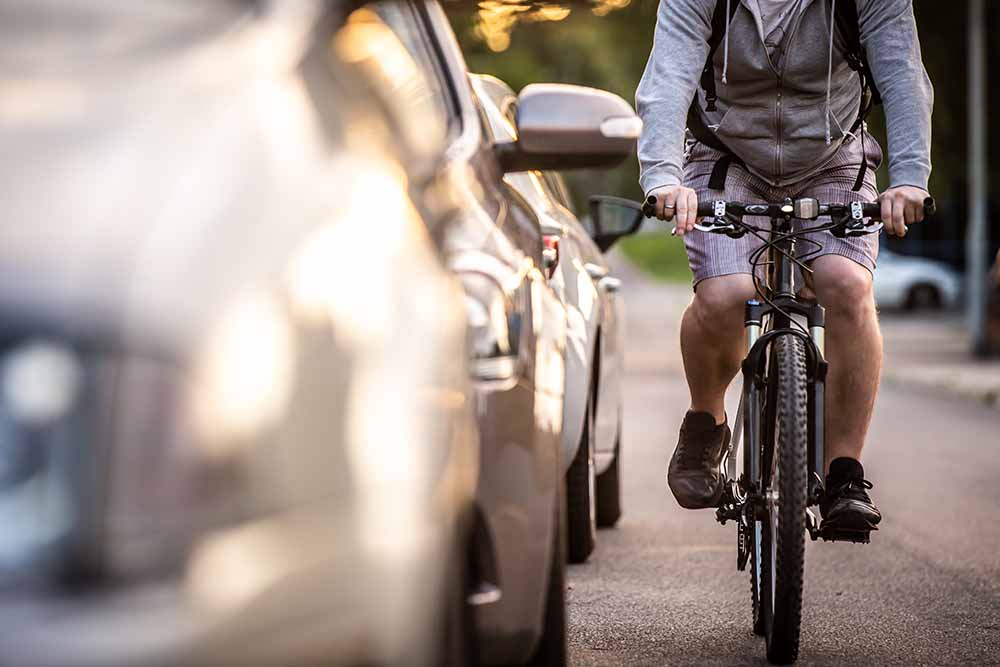
In most places around the world, cyclists and motorists use the same roads to get where they’re going. Unfortunately for both drivers and cyclists, this means they frequently find themselves at odds with each other as they compete for space, sometimes with deadly results. While there are plenty of examples of bad behaviour and unsafe driving on both sides, the cyclist – who is inherently more exposed and vulnerable – is always at greater risk of injury or death.
For most of Canada, local laws dictate that cyclists must abide by most of the same rules as cars. Cars, in turn, must yield to cyclists, who often share many of the same rights-of-way with pedestrians. If drivers and cyclists could learn to co-exist more harmoniously, the result wouldn’t just be safer roads, but less traffic as well. Here are a few ways to help everyone get where they’re going safely.
Make room
The easiest way to avoid colliding with a cyclist? Leave them plenty of space. Since cyclists often need to swerve to avoid potholes and debris, many municipalities dictate that drivers must leave at least one metre between their vehicle and a bike while in motion. Even if it’s not the law of the land where you live, it’s still a good idea to leave as much room as possible between your vehicle and a bike.
Be attentive
Like collisions between cars and pedestrians, far too many cyclists are hit by cars as a result of inattentive driving. Keep your eyes on the road, and avoid using electronics or eating behind the wheel. Cyclists are often guilty of this as well, which is all the more reason for drivers to remain vigilant.
Check your mirrors
Many collisions between cars and cyclists take place at intersections, often because a car turns into the path of a bike without seeing it. That’s why it’s important to check your passenger-side mirror for bikes before making a right turn or changing lanes. Equally important is to watch for oncoming bikes when you’re turning left, especially at night when they may not be as easily visible.
Respect the bike lane
Bike lanes have expanded across our cities in recent decades, providing cyclists with dedicated space away from traffic and preventing countless collisions. They only work, however, if motorists respect them and keep them clear. By parking in a bike lane, even for a few minutes, you are forcing bikes to ride around you and into traffic. This is also true for bike boxes at intersections, which must be kept clear to allow bikes to safely turn. A pair of chevrons painted on the road above a picture of a bike (officially known as “share arrows”) indicate a lane that’s shared between cars and bikes. These lanes are designed to give bikes room to avoid open car doors and other obstacles, so be sure to give bikes using them plenty of space and pass only when you have enough room to do so safely.
Do the Dutch reach
Many cyclists are injured each year by car doors that open unexpectedly in front of them. You can help to avoid this by making a habit of checking your side mirrors and practicing the “Dutch reach” technique. By reaching across your body and opening the car door with your right hand instead of your left, your head and torso are turned towards the road, making it easier for you to see oncoming bikes in your side mirror.
Be patient
Driving can be stressful, particularly on traffic-clogged city streets. It’s all too easy to get frustrated with cyclists, especially if they appear to be riding dangerously or flaunting the rules of the road. Like inconsiderate or unsafe drivers, however, the best way to deal with this is to give them plenty of room, even if it means slowing down. You can’t control what other motorists or cyclists do, but the best thing you can do to keep yourself and your passengers safe is to stay calm. If you feel road rage starting to get the better of you, pull over safely and take some deep breaths. Getting where you’re going a few minutes late is always better than getting into an accident.
Jeremy Freed is a freelance writer and editor based in Toronto. His writing about fashion, travel, food and design appears in Sharp, Harry and re:Porter magazines, among many others.